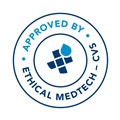
Mohamed Ali Abdelnaby
Alexandria University
Egypt
Title: Functional endoscopic sinus surgery in treatment of recalcitrant chronic polypoidal sinonasal rhinitis: Pearls and pros
Biography
Biography: Mohamed Ali Abdelnaby
Abstract
Background: Chronic polypoidal rhinosinusitis (CPRS) is characterized by mucosal inflammation affecting the nasal cavity and paranasal sinuses. Its pathogenesis is not completely established and potentially overlapping. The possible explanations are: Immune deficiencies, genetics, aeroallergens, fungal sinusitis, osteitis and biofilms. Multivariate causality makes the diagnosis of CPRS and selection of treatment complex. Surgical ventilation with mechanical disruption of biofilms and osteitis is a potential therapeutic choice. Purpose: To study the role of osteitis and biofilms in patients with CPRS and outcomes of functional endoscopic sinus surgery (FESS) in its management. Patients & Methods: Fifty patients (22 males, mean age of 30.6 years) undergoing FESS for CPRS. Multislice CT scan on nose and paranasal sinuses were examined and scored by Lund-Mackay (LM) staging protocol, determination of the severity of Osteitis using a new Global Osteitis Scoring Scale (GOSS). Samples of tissue and bone biopsy were taken from diseased sinuses to be analyzed histopathologically for detection of osteitis/biofilm and with scanning electron microscopy (EM) to evidence biofilms. From another ten patients scheduled for septoplasty with no evidence of sinusitis or polyposis, tissue specimens were obtained 1 cm behind the anterior end of inferior turbinate and processed in the same manner as a control group. Study design: A prospective cross-sectional cohort study Results: In 70% (35/50) of the CPRS patients, histopathology was positive for osteitis and biofilms were detected by EM in 39 (78%). Two of controls (20%) were positive for biofilm but none with osteitis. The mean LM staging was 19.08 and mean GOSS was 18.68. There was a significant correlation between LM staging and GOSS and between both and histopathologically proven osteitis, biofilms and postoperative endoscopic healing where increase soft tissue disease is associated with bad healing and vice versa. Conclusion: Osteitis and biofilms underlie the pathogenesis in the majority of Egyptian patients with CPRS. Scanning EM is a good method for visualization of biofilms that evidenced its presence in CPRS cases. FESS with surgical ventilation, mechanical disruption of biofilms and osteitis is a mandatory therapeutic choice.

